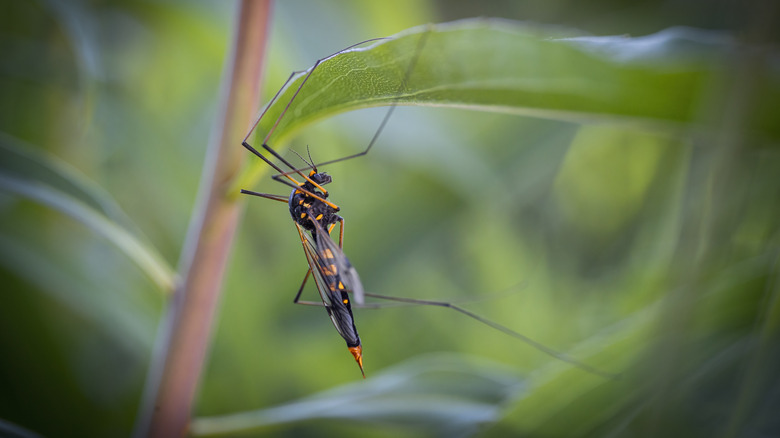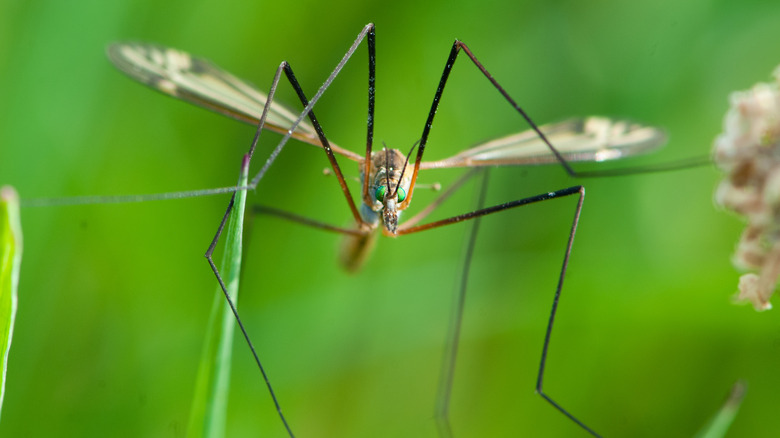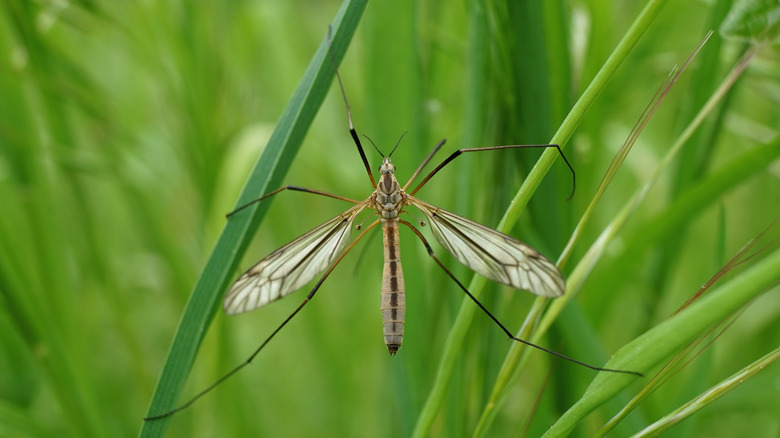Will The Crane Flies In Your Yard Bite You? Here's What You Should Know
If you spend a lot of time in your backyard, you might come across crane flies. These long, slender flies are one of the first insects to come out in the spring. An important part of the ecosystem, crane flies serve as food for skunks, birds, and other creatures. Crane flies swarm, so you may see quite a number of them in your yard. Large numbers of these insects can be unsettling.
Many people find crane flies frightening because of their appearance, but they won't hurt you. In fact, if one lands on your hand or gets in your house, there's no need to panic. Crane flies are often mistaken for mosquitos, but they are quite different. While mosquitoes bite and can transmit diseases that make you sick, crane flies don't spread disease or bite. Most crane flies don't even have mouths to bite you with! However, some species can damage your lawn.
Crane flies look like mosquitoes but don't bite
Crane flies can be mistaken for giant mosquitos, but they are very different. Because you definitely want to keep mosquitoes away, it helps to know the difference between the two. Crane flies tend to be larger than most mosquitoes. These brown or black flies can grow to be as large as 1.4 inches long! The easiest way to tell a crane fly from a mosquito is to look at its body. A mosquito has a humpbacked shape, while crane flies have straight bodies. Crane flies also have longer wings and legs.
Some people think that crane flies sting because the female has a large stinger-like organ that is used to lay eggs. However, they don't have an apparatus to sting or puncture the skin. The majority of adult crane flies have no mouths and typically don't eat because their lifespan is so short (one to three days). The ones that do have mouths use it to feed on nectar.
Why you don't want crane flies in your yard
Even though they can't bite or sting you, you may not want them in your yard because certain types of juvenile crane flies can do substantial damage to your turfgrass. European crane fly larvae feed on turfgrass's roots, shoots, and crowns. This particular species is found in the Northwest United States. These invasive insects can feed on grass faster than it can grow, causing significant damage to lawns — especially if they appear in large numbers.
Also, if you have a crane fly infestation in your lawn, you're likely to get skunks and other pests tearing up your grass, looking for the larvae. To keep destructive crane flies at bay, start by fixing drainage issues. Crane flies like low-lying wet areas with tall, unkempt grass. So, make sure your lawn is well-maintained. Mow your grass regularly to a height of two to three inches. Keep it fertilized as recommended, depending on the type of grass you have. You can also try garlic to keep pesky crane flies away from your lawn. Just crush several cloves and spread them around the areas of your lawn where you have an infestation.



